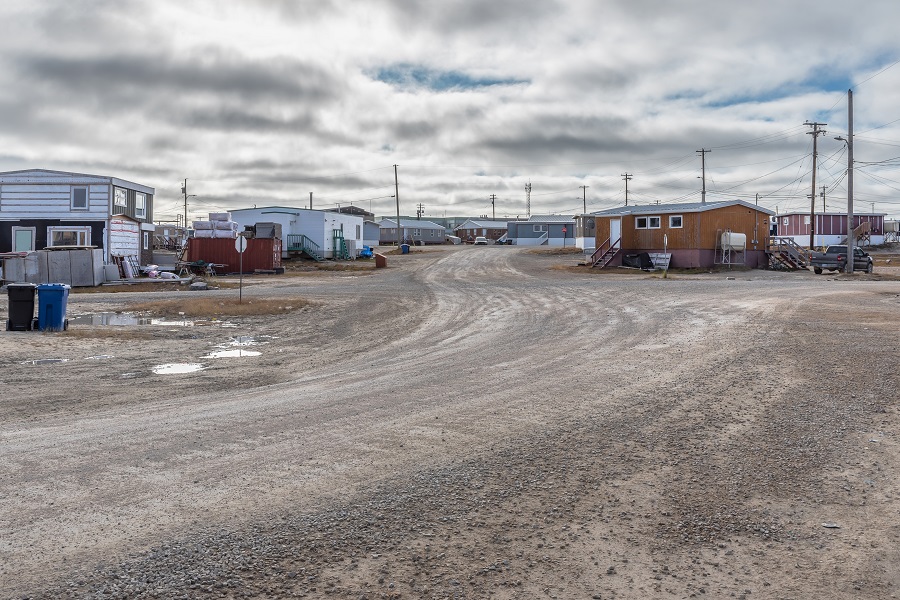Many have rightfully called for decisive government action to ensure that Indigenous communities have essential resources to respond to COVID-19. In response to the immediate needs of First Nations, Inuit, and Métis communities, the federal government announced $305 million for a distinctions-based Indigenous Communities Support Fund. Only time will tell how effective the fund will be in empowering communities to deal with the crisis.
But it is also important to look beyond the current crisis and not lose sight of the broader socioeconomic inequalities facing Indigenous communities—particularly remote communities. These include severe housing shortages, limited health care services and resources, and poverty—all of which disproportionately put Indigenous communities at risk. If we do not address these inequalities, we will continue to find ourselves treating the symptoms and not the causes of vulnerability to pandemics.
The challenges Indigenous communities face are not new. They are complex and hard to solve. But what do they really mean in practice? And how significant are they?
Health-related challenges increase susceptibility
Food insecurity, overcrowded housing, limited access to health care, and income disparities are challenges to the health of Indigenous people, particularly in remote communities. First Nations, Inuit, and Métis have a higher occurrence of chronic illness, as well as infectious disease rates that are four times higher than that of non-Indigenous people. They are also at notably higher risk for respiratory diseases, especially children. People with these types of pre-existing conditions have been most vulnerable to the virus.
Limited local health care resources for diagnosis and treatment
There are 241 physicians per 100,000 people in Canada. That number drops significantly for remote Indigenous communities. In Nunavut, for example, there are only 30 physicians per 100,000 people.
At community health stations, local health practitioners do a remarkable job providing care. But residents often need to leave their communities for medical appointments and health care services not available locally. This, in and of itself, is a risk. In 2009, the source of H1N1 in remote Indigenous communities was often traced to patients who had travelled for medical appointments.
A lack of infrastructure makes it harder to manage infectious disease
The severe housing shortage makes health issues for Indigenous people even more complicated, especially in remote communities. Overcrowding increases the risk of the virus spreading within, and across, households.
Only 4 per cent of non-Indigenous Canadians live in crowded housing compared with 23 per cent of First Nations people, roughly 10 per cent of Metis, and over 40 per cent of Inuit. (See chart.) The housing shortage is even more acute in remote communities. Almost 40 per cent of First Nations people on-reserve and over half of the Inuit population in Inuit Nunangat live in crowded homes.
Proportion of First Nations people, Métis, and Inuit living in crowded housing
(per cent)
Sources: The Conference Board of Canada; Statistics Canada, Catalogue no. 98-400-X2016163.
Many remote communities also lack roads or rail lines to connect them to other parts of the country, relying instead on air-travel and winter roads. If planes can’t fly and winter roads are not driveable because of bad weather, getting residents to the critical care they need can be especially difficult.
Compounding challenges: The example of tuberculosis
The persistence of tuberculosis (TB) in Indigenous populations, at epidemic proportions, highlights how overcrowded housing and an under-resourced health system magnify health risks for Indigenous people. While TB has been virtually eliminated in most of the developed world, the rate of TB infections in on-reserve First Nations is 50 times higher than for the Canadian-born non-Indigenous population. The TB rate for Inuit in Inuit Nunangat is 300 times higher. These rates have consistently increased over the last decades. The very inequalities that have let tuberculosis persist in Indigenous communities are risk factors for COVID-19, and a vaccine for COVID-19 is still likely over a year away.
How are Indigenous communities responding to COVID-19?
Indigenous communities are showing their resilience. They are ahead of the curve in the battle to flatten it. Some communities, like the Pimicikamak Cree Nation (Man.), Fort MacKay First Nation (Alta.), and Fort MacKay Métis and Dzawad’enuwx First Nation (B.C.), have closed their borders to try to prevent the spread of the virus. The Inuvialuit Regional Corporation in Northwest Territories is supporting Inuvialuit Inuit who want to spend 14 days or longer out on the land. The purpose of these actions is twofold:
- protect membership, especially the vulnerable, from the spread;
- provide culturally appropriate support for the self-isolation mandate issued across the country.
The Northwest Territories and Nunavut have followed this lead and are restricting inbound travel to protect their communities, as is the Nunavik Regional Board of Health and Social Services.
What’s needed?
We need an immediate response to reduce the risks and impacts of COVID-19, developed with Indigenous communities, not for them. The current crisis is also an urgent call to address the broader socioeconomic inequalities that place Indigenous communities at increased risk. If we as a country do not address these inequalities, First Nations, Inuit, and Métis communities will find themselves in exactly the same situation the next time a crisis hits—with governments scrambling to treat symptoms rather than causes.


